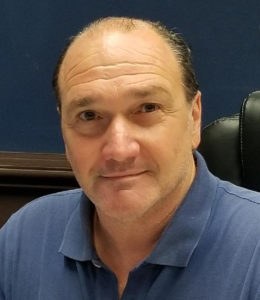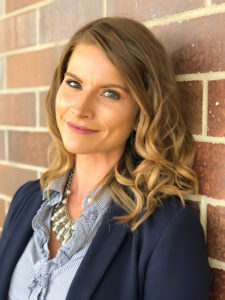CFA Members Nominated for Board of Directors
During preparation for Convention this year, it was communicated multiple times regarding seats opening up on the CFA Board of Directors for 2019 – 2022 terms. A total of five seats became available this year.
Departing the Board this year were individuals serving a broad range from one term to a whopping six terms. The Board and CFA Staff ask that you join us in congratulating and thanking the tireless service of Chris Ward (Western Forms, 3 years) as National Associate member; along with Doug Doggett (Doggett Concrete, 6 years), Kirby Justesen (SCW Footings & Foundations, 12 years), Mary Wilson (Michel Concrete, 8 years) and Jim Bartley (Bartley Corp, 18 years including Board President). See the article in this next month’s magazine that talks about these leaders that have helped to shape recent years of success and leave great platforms for the next contributors.
This year, CFA Board President, Phil Marone has given an impassioned plea to those who might feel the time is right for them to participate in new leadership ways. Seven individuals have responded with an interest in stepping into these roles. Four seats will be offered to at-large members, the contractors, consultants and design professionals while one is offered to the National Associate membership category as part of their rotational three seats.
The following nominees have expressed their desire to serve three- or one-year terms depending on their category of membership seat. In order to help CFA members get to know these persons nominated for these elections, CFA Staff asked each nominee two questions. Below are the profiles and responses to each question for your consideration. The candidates are in alphabetical order by last name within the category of membership seat with At-Large (Contractor) seats first and Associate seats last.
Nominations for At-Large (4 seats)
Shannon Dwinnell – Doggett Residential Services, Charlotte, North Carolina

Joined the company having worked as a project manager for home builders. He now runs the residential division for Doggett Concrete and is an ACI/CFA Residential Foundation Technician.
Shannon Dwinnell – Doggett Residential Services, Charlotte, North Carolina – Joined the company having worked as a project manager for home builders. He now runs the residential division for Doggett Concrete and is an ACI/CFA Residential Foundation Technician.
- What is the number one reason why you would consider serving on the CFA Board? Education. To educate myself with the collective experience and shared knowledge of the other members. To share my knowledge and experience in building in the Carolinas for the past 20+ years with others. Looking forward to the future and educating the new generations coming up in the trade with classes and training like the Rocky Geans class I attended and other impactful lessons we can hopefully provide to the guys who put their boots on every morning to make it happen out in the field.
- What do you feel you can bring to the CFA Board in your service? A broad-based experience in the building trade, most of which was in the high-end residential area. My experience has included coastal Charleston building where flood, seismic and wind codes, regulations and ordinances all came into play. The more recent part of my career has been in the Raleigh and Charlotte markets where codes and regulations are similar but not identical. This experience has given me an appreciation for knowing the code and how it can affect our business in the most subtle of ways. I have a curious nature and tend to enjoy asking questions and finding answers. Whenever possible I want to clarify what I have learned and if possible, help change things that can be improved. Every day I ask myself how do we improve our Safety, Consistency and Profitability?
Tim Eckert – Weber Concrete, Zionsville, Indiana

Has been part of the team at Weber Concrete, a 35-year organizational member, since 2002. Prior to coming to work on the contracting side of the industry he served in the ready mix industry since 1978. He has considerable experience working for non-profit boards including the Builders Association of Greater Indianapolis (3rd term), Builders Association of Greater Lafayette (2nd term), Indiana Builders Association (8 years), Indiana Construction Roundtable Foundation (1st term), Hancock County Builders Council (3rd term) and an appointment to the Indiana Housing Board.
- What is the number one reason why you would consider serving on the CFA Board? The main reason to serve on the CFA Board is the positive impact one can have on the entire residential housing industry. The foundation cost must be considered in attainable, affordable housing production so more people, families can purchase a new home. Using innovative ideas and collaborating with experienced peers to address America’s housing issues we can have a huge influence in addressing our housing needs.
- What do you feel you can bring to the CFA Board in your service? With my experience serving on related boards, I’ve heard and seen the current issues and dilemmas facing our businesses. I can help identify, enunciate and explain the problems of housing affordability, workforce development and integration of new techniques in the concrete industry relating to residential construction as a whole.
Andy Renner – Bartley Corp, Silver Springs, Maryland
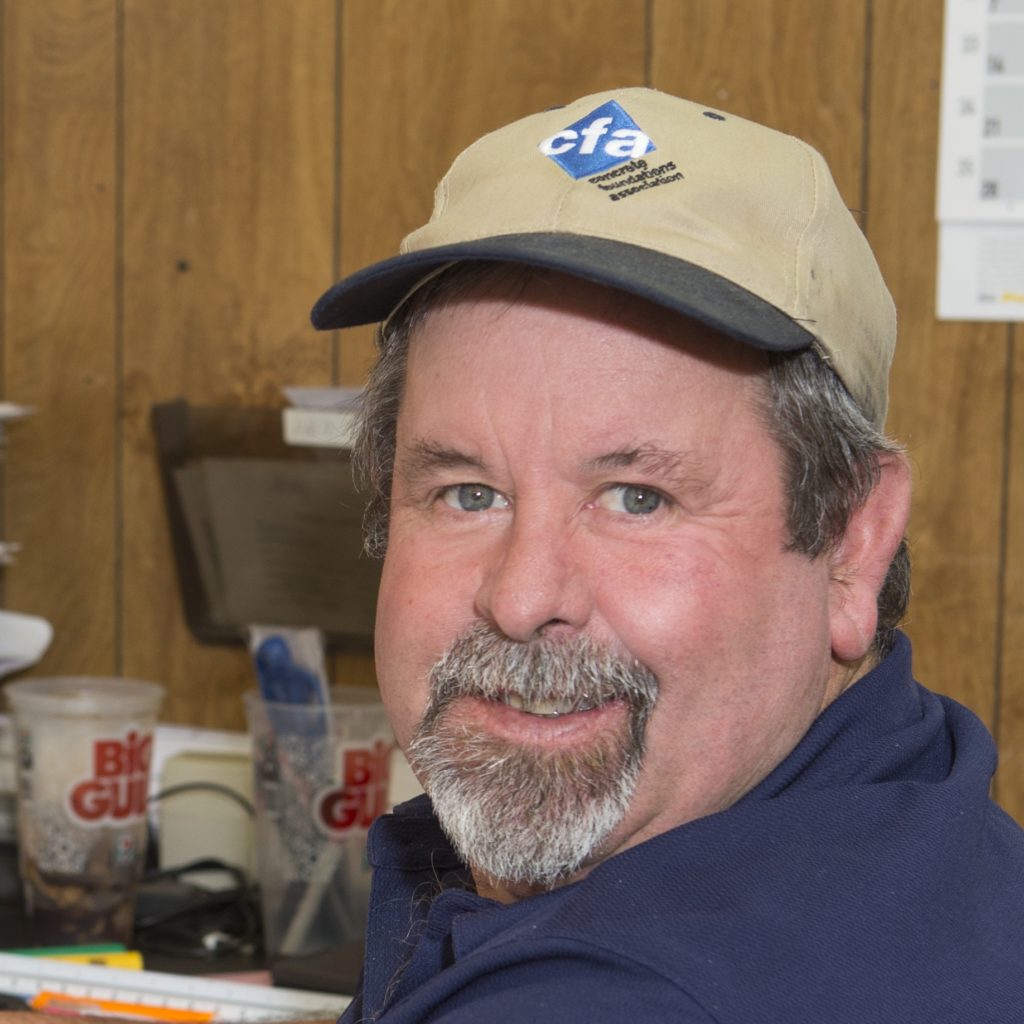
Joined the team at Bartley Corp, a founding member organization of the CFA, as a concrete laborer and steadily grew through the stages of experience and management. Frequently attends CFA Conventions and regional events.
- What is the number one reason why you would consider serving on the CFA Board? I want to share my experience with our industry! I started as a laborer in concrete foundations, made it to wall foreman, commercial superintendent, residential project manager, and VP of Residential with Bartley Corp. I’m excited to work with you all, share ideas and make a difference.
- What do you feel you can bring to the CFA Board in your service? I feel that I can bring new ideas to the board meetings and events. But my passion is to make our industry better, and our world better while I am at the top of my game! With me you get what you get
Russ Talpey – Talpey Construction, Westbrook, Connecticut
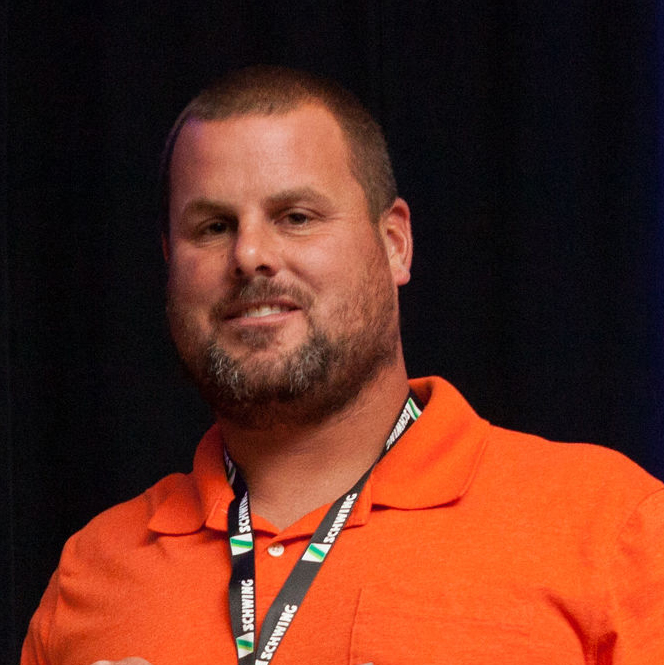
Joined the CFA as a contractor member in 2015 and quickly became one of the most consistent voices in and around networking circles. His projects have been submitted for and recognized with multiple awards and he is the recipient in recent years of the Kick-Start Member of the Year (2017) and Contractor of the Year (2019).
- What is the number one reason why you would consider serving on the CFA Board? It seems like an opportunity to expand. This is what we do, it’s nice to know people in a similar role. I think it may be good to get representation from a smaller company on the board. From the northeast as well. Dennis [Purinton] has done a great job representing small companies from the area, would be nice to continue on that path. Networking is a reason too. You don’t see really any big companies in this area so unless my sons decide they want to be part of the business, moving into a managerial role probably will never happen. You can only do this for so long, it’s just a reality. It would be foolish to not create potential new pathways.
- What do you feel you can bring to the CFA Board in your service? I’m relatively young and I love the business. I’ll be doing this for a good while longer, I have some concerns about things I think CFA could help with.
John Yakovich – Solid Concrete Walls, Salt Lake City, Utah
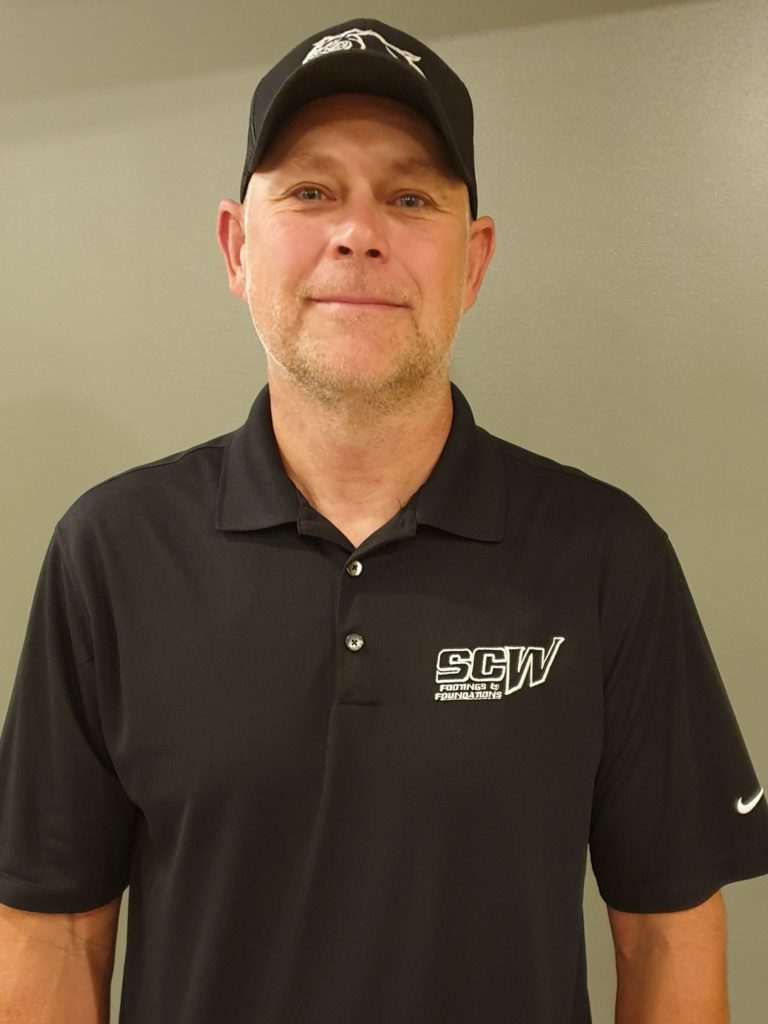
Began in the construction industry in 1990 and will soon celebrate his 30th year, working in various positions in construction including concrete footings and foundations, for three different and unique companies. giving me a broad perspective of this industry. First at a very small company in the early 90’s where he learned the basics of concrete construction management on entry level production homes. Second, he spent time in the Carpenter’s Union, which became a great learning opportunity expanding into bigger markets with higher walls, water tanks, and bridges for the interstate highway as well as the dynamics of working for a collective bargaining group. Finally, he came to work for long-time CFA member, Formco Foundations, now SCW Footings & Foundations, working through various positions at the company. He has been part of a foundation wall crew for some of the most complex buildings in the country; a crane operator; managed a weld shop and became Purchasing Manager. Now a Project Manager, he is responsible for all types of work, small jobs to large multi-million-dollar contracts of various levels of complexity and oversees all aspects of the company’s projects and operations and was recently invited and joined the ownership of the company as a partner.
- What is the number one reason why you would consider serving on the CFA Board? I have attended a few board meetings in the past couple of year. Even though the primary topics discussed were budget issues and attracting new members, my attendance has given me some insight of how ideas are deliberated, hashed out, debated, and negotiated to create a great plan for each issue. I have seen SCW benefit from the ideas, safety, training, and collaboration that have come from the leadership of the board of the CFA.
- What do you feel you can bring to the CFA Board in your service? I am confident that I could bring to the CFA board innovative ideas, infield experience, hands-on expertise and a hard and smart work ethic. I am a hands on guy always ready to pick up the welder to make a prototype, or try a new system, or hop on the computer to determine the best approaches for a new project, or collaborate with a group of experts to come up with the best way to do something.
Nominations for National Associate Seat (1)
Hal Cassidy – Prinsco/PROFORM HD, Willmar, Minnesota
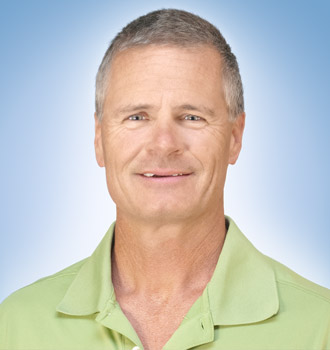
President and founder of Prinsco, recently recognized as with an MIP at World of Concrete for their innovative solutions to system for forming, drainage and ventilation in footings and foundations. He has run for election to the Board of Directors each of the last three years.
- What is the number one reason why you would consider serving on the CFA Board? I want to continue to learn more about the industry; its opportunities, its challenges, and provide creative input to help advance the organization and its members.
- What do you feel you can bring to the CFA Board in your service? I’ve been in the drainage industry for nearly 30 years and believe that drainage itself is a very critical component to a quality and long-lasting foundation. I’m also a highly creative individual and like to think “outside the box” and challenge others to do the same. These combine for lending my passion and energy to CFA direction and growth.
Aaron Witmer – GCI Slingers, Zionsville, Indiana

A growth and expansion minded professional, has been in concrete foundations his entire life, beginning with his grandpa at age 7. Joined the GCI team when it was a $1.8 million company. Today it is three companies that do over $20 million a year, with five divisions and seven revenue streams.
- What is the number one reason why you would consider serving on the CFA Board? The number one reason I would like the opportunity to be on the board of the CFA’s is because I believe in the CFA. The CFA has been a huge resource for me during my time with GCI Slingers, not only an information resource, but also a relationships resource and I can tell you that there is no other resource that offers or compares in any way to the CFA. Education. Simply put, every seminar, education hour, or course that I have sent my guys, Travis Pettijohn the owner, or have taken myself have shown true value, meaning that we take things away each time that we can apply in our business.
- What do you feel you can bring to the CFA Board in your service? I have served on 4 other boards, and dozens of committees. (Currently on one board and 1 committee). I am a growth and expansion minded professional. I believe that you are either growing or you are dying in business. I am also a systems guy. I am Lean Six Sigma obsessed. Metrics and math truly control everything. That being said, I believe that properly applied metrics is the key to growth. Experience is also a key. I have worked on everything from one crew companies and I have ran the largest jobsite in the United States. I know foundation companies and I understand what the business owners go through on every scale. Finally, growth again. I truly believe my unique skill set can help the CFA board achieve their goal of increasing memberships along with participation. I have many ideas (opinions) on this. Growth has been the focus of my career for the last decade. As my mentor Jim Mizes says, “Growth is always the key to every business, without it, the fast followers of the world will repeat your business, grow their business, and take yours away from you.

Warren McPherson Jr. 1948-2019
For many participants in the concrete industry, this summer was met with sadness in the loss of a legend and powerful advocator for our industry. Many of us served with him on ACI committees and in other arenas. His warm smile and quiet confidence always preceded his technical prowess and passionate service. – James Baty, CFA Executive Director
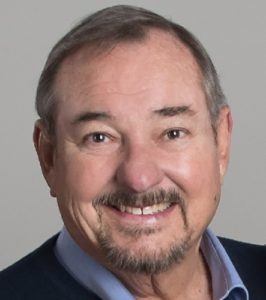
McPherson, JR., Warren Edward 4/10/1948 – 8/13/2019 Hartland, MI
Warren was the beloved husband of Kathleen (nee Desmond) for nearly 48 years. Loving son of Mary McPherson Fitzwater (Lloyd) and the late Warren E. McPherson, Sr. Loving father of Amy Christine and Melissa Anne (Jeffery). Adoring grandfather of Abigail Margaret, Cameron Edward, Emeline Mae and William Edward. Loving Brother-in-Law, Uncle, Great Uncle, Colleague and Friend.
Warren graduated from Southeast Missouri State University in 1971 with a B.S. in Mathematics, and minors in Chemistry, Computer Science and Education. He dedicated his career as a renowned Concretist. A Fellow of the American Concrete Institute (ACI) International, Member of Michigan Concrete Association and American Society of Concrete Contractors. Former President and Lieutenant Governor of the Optimist Club, Member of Fraternal Order of the Moose.
A memorial service will be held at St. Andrews Episcopal Church, 306 N. Division, Ann Arbor at 10 a.m. on Saturday 08/24/2019. The family invites you to continue the celebration of Warren’s life at Bar None Restaurant, 11600 Grand River Ave, Brighton, MI 48116 from 12 – 3 p.m. on Saturday 08/24/2019. In lieu of flowers, the family requests donations be made to support the Rogel Cancer Center – Sarcoma Research Fund.
Checks may be made to University of Michigan and sent to Medical Development, 1000 Oakbrook Suite 100, Ann Arbor, MI 48104 or visit the website victors.us/warrenmcphersonjr to make a gift.
Press Release: Nox-Crete Names New President
FOR IMMEDIATE RELEASE
Nox-Crete names Lori Reid new company president
Reid facilitates Nox-Crete’s goals to innovate new products, grow ESOP program
Omaha, Neb., June 18, 2019 – Lori Reid has been named President of Nox-Crete Products Group, Inc., a promotion that comes three years after she joined the team as Chief Financial Officer in 2015.
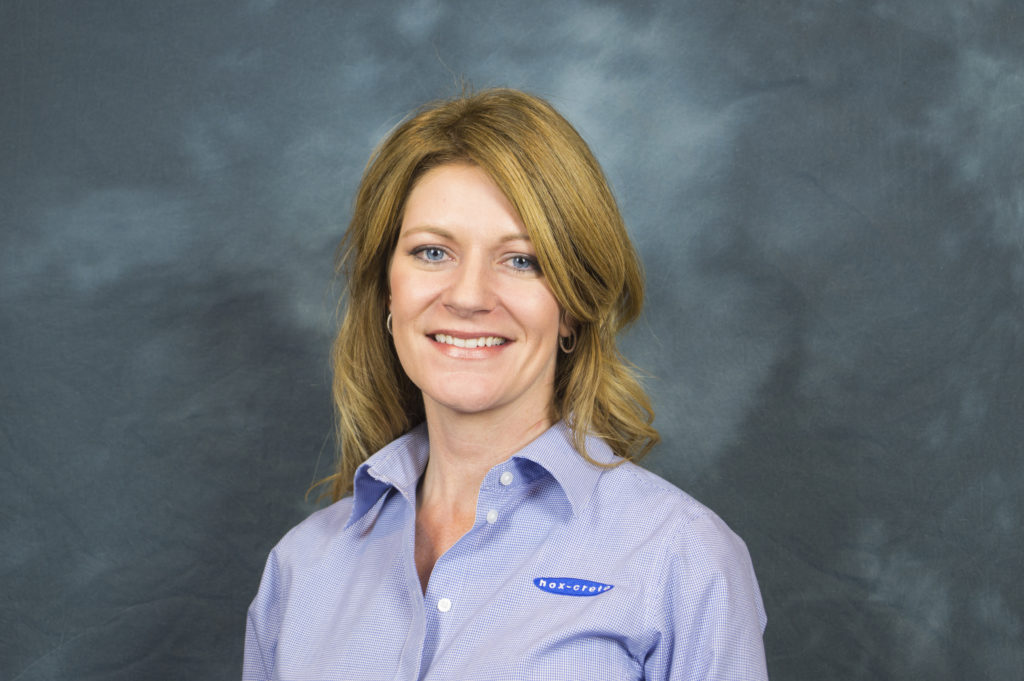
Nox-Crete Products Group, founded in 1956, was the first company to develop Nox-Crete Form Coating, a chemically active release agent. The company went on to create Nox-Crete Deactivator for form maintenance. Today, the company continues to develop and offer innovative products for the concrete forming industry, with the goal to educate and train suppliers, contractors and construction workers on best practices to for better building projects.
In her former CFO role with Nox-Crete, Reid focused on key metrics, development of financial and operations strategy, asset preservation and financial reporting. She has also played a key role in the company’s transition from a privately-owned, family business to an employee-owned company in 2015.
In her new role as President, Reid’s focus will shift to developing and implementing the company’s strategic vision, adapting as the industry and customers’ needs continue to evolve.
Prior to joining Nox-Crete, Reid served as Financial Controller for Advanta US (Dallas, TX), Vice President of Business Development and Administration for American Star Energy & Minerals (Amarillo, TX) and Accounting Manager for McCleskey Harriger Brazill & Graf (Lubbock, TX).
Nox-Crete CEO Michael Linn is confident that Reid’s role will help usher in Nox-Crete’s latest stage of development. Linn will retain his CEO title and assist Reid as she takes on more responsibility in her new position.
“We see this as an important change as Nox-Crete moves into its next chapter of growth,” Linn said. “We’ve moved from a family-owned business to an ESOP company. Lori’s past experience with both our company and in the business world make her the ideal candidate to help Nox-Crete continue to grow and offer customers innovative products.”
Reid views the role as an opportunity to leverage the Nox-Crete’s strong history and reputation for excellence to reach the next level.
“I look forward to building upon Nox-Crete’s solid foundation as we adapt to ever-changing market conditions and enter into the next phase of our company’s growth,” Reid says. “With our committed employee owners, superior technical expertise and industry-leading technology, we will continue to be the benchmark for providing cutting-edge solutions to our customers’ needs.”
###
GENE H. WALDENBERGER
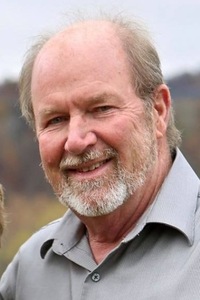
It is with great sadness that we inform you of the passing of CFA member Gene Waldenberger.
Gene H. Waldenberger, 67, of Holmen passed away Saturday, March 16, 2019, surrounded by his family at home.
He was born June 9, 1951, in La Crosse, to Leo and Jeanette Waldenberger. He married Sue Ammerman Aug. 21, 1971, at St. Patrick’s Catholic Church in Onalaska.
Gene started his career in concrete construction with La Crosse Wall. Moving on a few years later to start his own business, Waldenberger Poured Walls in 1975.
He loved his job, which showed through his dedication and strong work ethic. His family-oriented business touched the lives of the many people he worked with over the 42 years. He retired in 2017, with gratitude toward his family, employees and friends in the construction business.
He was a dedicated family man who enjoyed spending time with his wife, children and grandchildren. He enjoyed driving and camping in his RV, in the early years it was weekends with the camping club, being a member of the WIT-Winnehaha’s for over 30 years. He also enjoyed spending time outdoors, splitting wood or taking naps in his tree stand. Spending time at the cabin, enjoying walks on the beaches in Florida and traveling with his wife were among the things he enjoyed the most. Gene was very proud of his children and grandchildren.
He is survived by his loving wife, Sue; father, Leo; children, Chad (Lisa) Waldenberger, Kristi (Randy) Wigdal, Kari (Adam) Huth, Katie (Nick) Strasser; grandchildren, Jessa, Grace, Josie and Cade Waldenberger, Dane and Abby Wigdal, Ava and Evan Huth, and Anna and Nicholas Strasser. He is further survived by brothers, Alvin (Linda) Waldenberger and Mark (Mark) Waldenberger; in-laws, Vicki McCord, Sally (Tom) Granum, Jeff (Cindy) Ammerman, Greg Ammerman, Michael Ammerman, Paul (Brian) Ammerman, Rhonda Mullen; and many nieces, nephews, aunts, uncles and cousins.
He is preceded in death by his mother, Jeanette; his grandparents; mother and father in-laws, Barbara and Keith Huber and Jack Ammerman; special friend and brother-in-law, Bill McCord; and numerous aunts and uncles.
A special thanks to the Mayo Health Care System, especially Dr. Pophali, Dr. Stockham, Dr. Bingol and their teams, for the wonderful care. In lieu of flowers, memorial contributions may be made to the Holmen Area Community Center.
“One step at a time. Never give up.”
Membership Resources: Experience the CFA Hotline
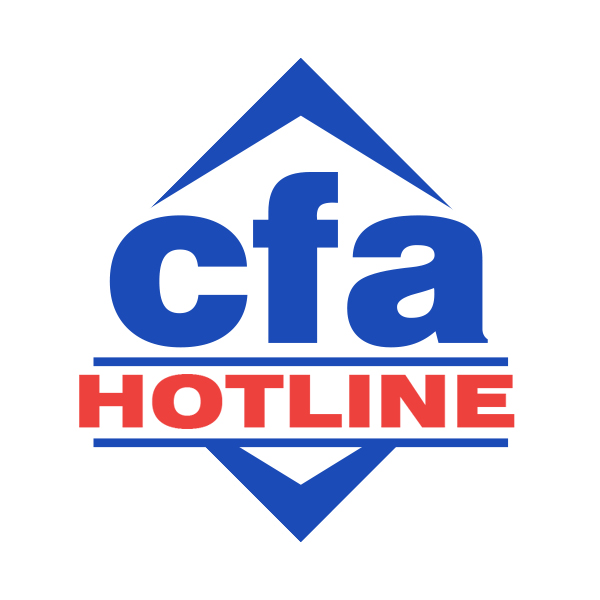
Ninety-three people, representing seventy-five different member companies, currently participate in one of the major resources developed by the Concrete Foundations Association. This resource, known as the “Hotline,” brings together two of the primary reasons this association was initially developed: sharing experiences and providing support from qualified sources of information. “When passionate and interested minds come together in any kind of a space,” states CFA Executive Director, James Baty, “instantly there is a sense of purpose and value for the investment of time and resources.”
It was to fulfill just such a purpose that the idea of a Hotline was generated by the Board of Directors during their strategic planning in 2012. During that session in Minneapolis, the board members assessed the strengths, weaknesses, threats and opportunities of the Association, the common components of any SWOT analysis. They rationalized that one of the weaker areas for the general Association membership was the requirement for contractors to attend a physical meeting in order to gain the sense of participation, togetherness and idea sharing. There were no resources readily available outside conventions or regional education events where members could trade ideas and test challenging situations. Therefore, the board decided to take advantage of the internet, using it to bring members closer together on a frequent and convenient basis. “Think of the Hotline as an information roundtable that exists in real time,” states Baty. “Any employee of a member organization can join the discussion, pose a question about any aspect of business, and freely comment on questions that are posed by others.”
Activity on the Hotline occurs in varying intervals with an average of at least one inquiry per week. Topics range from software packages employed in different ways to contract disputes; forming details suggestions to business decision-making, and many other topics. There really are no restrictions to kinds of inquiries made. Generally speaking, the more detailed the question, the more realistic and complete the responses will be. One of the latest discussion items was generated on the topic of water stops between footings and walls. This dialogue is shared in order to provide an example of the engagement inspired by this member resource.
CFA Hotline Inquiry: Dumbbell Water Stops
In early May, the Hotline received an inquiry from a contractor member posing the following question below. Each answer received is also provided. For the most part, questions and answers are accompanied by the contact information of the person writing, allowing for private off-line conversations to be had for deeper discussion, as well as to help determine the context and regional thoughts on the situation when possible. However, for this article, the names and contact information have been removed to maintain member privacy.
Q: We are doing a job that calls for dumbbell waterstop between the footing and the wall, and also on the interior footing spread between the footing and the slab. Admittedly, I have used strip waterstop countless times, but I have never installed dumbbell waterstop. Was looking to see what the best brands are in people’s opinions (nothing by product name specified by engineer) and any tips on installing. Thanks.
The rationale behind creating the CFA Hotline was that a primary value of belonging to an association of peers is to glean from others’ experiences with new technologies, details, specifications and projects. Let’s take a look at some of the experience that was shared with this inquiring CFA member.
A1: When we are using a dumbbell waterstop, we often use the [attached brand], but there are many to choose from. For our typical installation, assuming there will be vertical rebar tied in place prior to footing concrete placement, we will wire tie a 2×4 against the vertical rebar. Then we will c-clamp the waterstop to the 2×4. This will keep the waterstop off of the rebar and allow you to place it at the proper elevation, nice and straight. Hope this helps. Actually, I hope someone else has found a better way and will share with us!
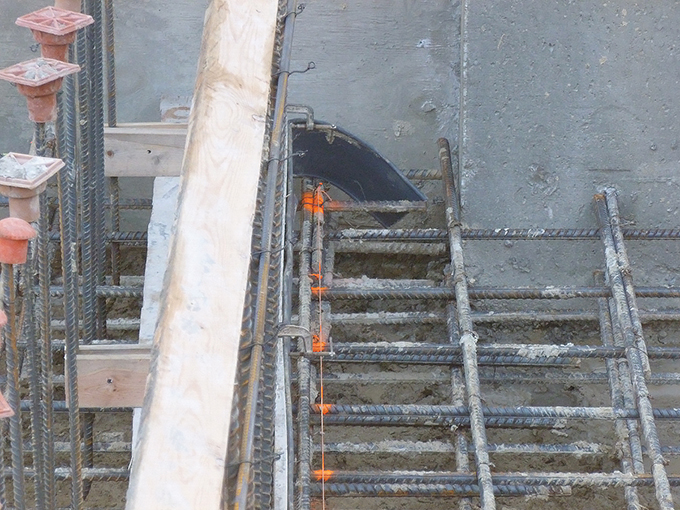
The product literature provided by this response not only gave immediate feedback for brand options to consider, but also brought the Association information about a company that could get plugged in, through CFA membership, to further educate the Association as a whole.
Another participant, receiving the original question as well as this initial response, replied:
A2: We have used it in similar applications, such as the joint between floor slab and wall intersection on DOT salt storage facilities. We always use this same brand.
As seen from these two interactions, the originating member can begin to build confidence in the solution proposed or consider alternative approaches. With the contact information provided, he or she may also be led to extended, private conversations, if necessary, about specific practices, estimating, etc.
The Hotline also often brings variation in approach and ideas about how to take opportunities like this in different, sometimes unexpected directions. Simply accepting the detail or specification provided may not be in the best interest, depending on experience or the availability of materials or technology in a given market. When such a situation arises, participants share alternative thinking and ways of encouraging the project team to accept a value-added proposal.
A3: We now ask to convert the waterstop to a swelling material [brand provided]. This product is applied from a special caulking gun after footing placement. We have done water tanks and many jobs below water table. Also, it can be used vertically when you are butting into existing structure. We have not had a leak at any joint where we have used the product. Engineers have, in general, been very receptive to the change proposal.
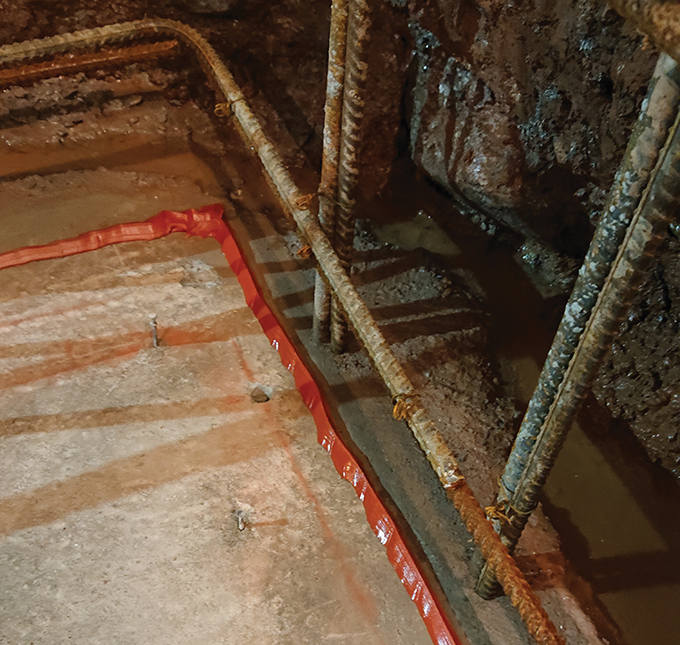
And with this change in direction, more participants began to corroborate this application suggestion.
A4: We also request to use a swell-stop type waterstop where possible. It’s just easier and quality control is better. Though I am not familiar with the type out of a caulk tube, we usually use the tar rope type. Do be aware that there is a minimum thickness of concrete on each side of a swell-stop type of waterstop. If the concrete is too thin at the location of the product, the pressure exerted by the expansion of the swell stop can crack and even break concrete. We had this happen a couple of years ago, where we butted a slab against a wall after attaching a swell stop on the wall. Poured the floor 8” thick, but the swell stop was specified to be around 2” from the top of the slab. A crack later developed, running kind of parallel to the wall. We finally figured out that the expansion of the swell stop occurred prior to the concrete gaining enough strength to resist the pressure exerted by that swell-stop product. I would also caution that swell stop is water-activated, so you can’t leave it exposed if you will have rain or snow. Good luck!
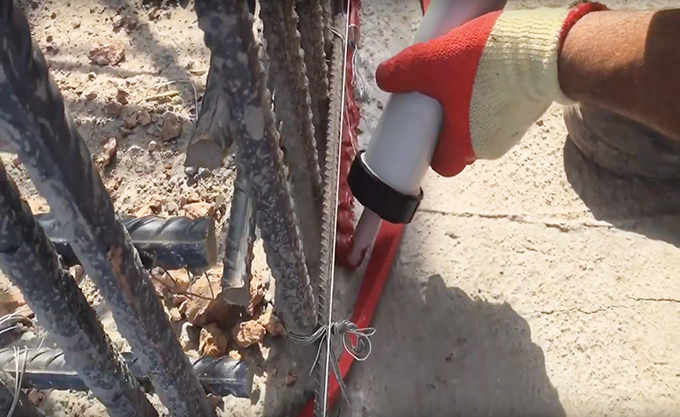
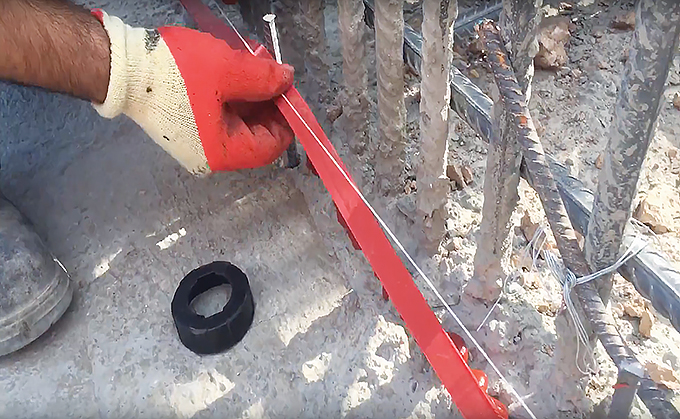
Here you have corroboration of a different kind: sharing risk and reward experience to help keep the original questioner (as well as all participants) from getting caught making similar mistakes, costly repairs, and unnecessary replacements. As the conversation continued, additional comments were offered, having product suggestions and further experiences.
A5: We prefer to use the swell-stop bentonite. We also have tried the adhesive in caulking tubes to glue the swell stop in place. It works really good.
A6: Hello, over the years we have used dumbbell waterstop and it is nothing but a pain in the @$$! We were introduced to the same swell-stop product and have never looked back. If dumbbell is specified, we immediately ask the engineer or GC about using the swell stop and they have yet to turn us down.
These two comments further show the ability of the concrete contractor to apply reason and experience to lead to the overall success of the product. For those who perhaps have not thought to use their expertise to suggest a better solution when working with a project team, this gives encouragement that many times project specifications and details are borrowed or applied from a general set of conditions – not necessarily state-of-the-art research. Project teams are willing to listen to solutions that will guarantee success, especially if they are cost-neutral or have the chance of eliminating problems.
As the conversation for this particular issue drew to a close, another comment offered support for both methods, and sometimes the use of both to make sure water is never an issue.
A7: We also use dumbbell and bentonite waterstop on pits, tunnels, salt buildings, and manure containments. When we have vertical steel on each face of the wall, we use bentonite If there is only one vertical bar, then it is dumbbell. We also clamp our dumbbell to a 2×4, and often it is in a key way as described earlier. Some inspectors have made us melt the ends together, rather than just overlapping them. We will pull the bentonite in with a fish tape or string and apply the adhesive as we unroll it. The ends are butted and tied together and then we just keep pulling. When we have it pulled in, we take a rebar and tap the waterstop to the footing to seat the adhesive. Bentonite still seems to wiggle with the glue, but the vertical bars keep it from the outside of the wall. Have not used one brand that is better or easier than the other to apply. Good luck.
The Hotline is one of the CFA’s most consistent membership resources and serves a broad membership base. If you have yet to engage this resource, you are encouraged to send a request email to hotline@cfaconcretepros.org. If you are not yet a member of the CFA, we ask you: what are you waiting for? Each person on this communication topic and the many other members participating regularly would eagerly tell you that this one resource is more than worth the annual commitment to membership. Start today by emailing us at info@cfaconcretepros.org or by going directly to www.cfaconcretepros.org.
Succession Planning for Contractors
David Whitlock will be speaking in Denver at the 2019 Concrete Foundations Convention on drug policies and practices in the workplace.

One of the frequently visited topics at CFA Headquarters, through various communication methods, pertains to business owners nearing the point of retirement. The concern stems from an apparent uncertainty and a lack of planning regarding what resources to consider, along with not knowing what options exist for establishing a path that leads to an easy transition into retirement for the business owners while still making sure the business continues. Though this subject has been presented during numerous Concrete Foundation Conventions, David Whitlock brings a new perspective, as he addresses this issue from his position as an employer advocate attorney.
You have worked incredibly hard to build your business and make it successful. You have invested in accumulating knowledge, skills, experience, and opportunities that have come your way, and the end result is a profitable business with happy customers and honest, hard-working employees. So, what are your plans for the future?
All too often, successful small businesses disappear when the founding principal does. This can be because of a sudden, unexpected catastrophe or simply because of a lack of succession planning. In either case, too few contractors focus on their exit strategy until it is way too late. This is sad, because the result is often that the value of the business is severely undermined by taxes or penalties, and what owners leave behind is far less than what they had hoped.
Smart succession planning is a long-term project. It will take some time and effort, but the end result is well worth it. Let’s look at some of the decisions you need to make and some of the issues that arise.
First, you need to decide what you want to do and establish long-term goals. This involves decisions about your future involvement in the business; the amount of money you need in order to withdraw from the business; whether you want to leave the business to a family member, partner, key manager, group of employees, or someone else; and what sort of legacy you want to leave behind.
In terms of your involvement in the business, sometimes the hardest part of succession planning is letting go. You have invested your life in growing the business, so it is often very difficult to simply walk away. But, as you transfer ownership, you almost always necessarily pass control on to someone else. How active you remain in the business may also depend on what the business needs to remain successful. For some contractors, the owner’s relationships with vendors, customers, subcontractors, and others are critical assets of the business, and you may need to stay involved until your successor can nurture those relationships.
For retirement planning purposes, you need to consider the income stream you need in the future and your current portfolio of investments that will help you reach your desired monetary goals. You may also be considering long-term legacies for your children or grandchildren and how those will be funded. All of this may affect whether you want to cash out completely, take a structured pay-out, remain an investor, finance the sale of the business, etc. These choices have important tax and financial consequences.
The goal-setting process may necessarily involve consideration of the futures of others. In a family business, you will want to take into account the goals and futures of key family members involved in the business. If you are preparing a family member to take over for you, that person’s goals and expectations will clearly be a key factor in the decisions you make about long-term strategy.
You will also want to consider the impact of your departure upon key managers and employees and what their goals for the future might be. If you have partners in the business today, your future plans will necessarily impact them. It is always a good idea to involve partners, managers, and key employees in the succession planning process so that no one is surprised by your withdrawal from the business and the accompanying changes to the business and its operations. This is especially important for managers and key employees who may be tempted to leave during times of transition.
In addition to your personal goals and the consideration of others’ goals, you will need to think of the business itself. Who will run things in your absence? Is that person ready? Are future roles and responsibilities clearly understood? If you plan to sell the business and walk away, management succession may be unimportant to you, and you can leave that concern to the future owner. For most small business owners, however, the matter of who runs the company going forward is a very important concern. Most founders care deeply about the future of employees, the company’s goodwill, customers, the owner’s name, and, especially, family members still involved in the business.
As you contemplate who will assume control of your business, you should understand clearly what will be expected. Often, this requires you to do something you do not often think of: write down exactly what you do. Most owners fill their day with hundreds of different decisions – some small and some large. You will want to define carefully what your present role is and what you accomplish on a day-to-day basis, so that you can identify and prepare a likely candidate to take on those responsibilities. You will also want to make a comprehensive list of all of your contacts and relationships, as this sort of information is usually vital to future success.
Next, you will need to assess the skills of your current management team to ensure that they are capable of assuming control. If not, consider what training they need. You may find that you will divide some of the responsibilities you hold among several managers, but you will probably want to have someone clearly in charge. If you plan to bring in an outside successor, you will want to prepare your current managers and employees for the transition. You will still need to assess the successor’s skill set, so that you can prepare and train the successor as necessary and involve existing managers in that process as well.
Once you have identified your personal and business goals, it is helpful to list some key points so that you can develop the succession plan. A list summarizing your financial objectives, future ownership and business structure, chosen successor and key managers, your future involvement, and any special considerations will be invaluable to the experts you will need to consult to implement a succession plan.
Good succession planning requires input from a variety of experts and resources. In most cases, this will include an accountant, tax advisor, financial planner, insurance broker, and/or legal counsel. These experts will help you pick the best tools for achieving your goals.
One of the first things that your experts will determine is what your business is worth. This is usually a more complicated question than you initially think, especially in a business that is based upon project work. There is a variety of financial methods for determining value, but the easiest way to determine this is to engage an expert. Generally, a good CPA or business appraiser can provide a pretty accurate valuation for your business today and in the future. This will help determine the sale price, creating the income stream for your retirement or other long-term goals. You may also discover that the business is not worth enough today to create the income you want or need tomorrow, in which case, you will want to explore ways to increase the value of the business.
Once you know what the business is worth, you can begin to consider legal options for transferring wealth and control. The legal options you explore will depend in part upon the goals and objectives you identified earlier. It is extremely important to have competent legal counsel for tax and estate planning purposes at this point in the succession process. Here are some examples of plans and tools you can use.
The simplest way out, for those owners who have not or cannot identify a successor, is outright sale or liquidation of the business. Because you know what your business is worth, you also know what you can sell it for (although it is rare that a buyer will want to pay you all of the price at once). More common in an outright sale scenario is an installment purchase. For many owners, this works well because it permits a gradual withdrawal and transition of the business to the new owner, which, in turn, helps ensure that the business remains viable long enough to meet the installment payments. Unfortunately, for some businesses, there is no buyer on the horizon, and the business is liquidated for whatever cash the owner can get. In the case of sale or liquidation, there really is not a succession plan, although there may be some contracts or agreements for sale of assets, inventory, etc.
If you want to keep the business in the family, there are a number of ways to do this. It is important here to recognize the difference between ownership and control. You may very well choose to pass ownership to your family but choose to groom or hire someone to manage the business. The ownership interest can pass through gifts, by establishing trusts, or by selling shares of the business directly. Also, you might choose to use equity in the business as an incentive for key managers or employees, while retaining majority ownership for family members, or trusts controlled and directed by family members.

If there are a small number of shareholders in the business, buy-sell agreements can be a useful tool. Generally, these provide that if and when an owner wants to get out of the business, the remaining shareholders, or the company itself, are given an option to purchase the departing shareholder’s interest. This helps preserve ownership continuity and provides funding for the departing owner.
For a well-established small business, a management buyout can be a useful and reliable way to transfer ownership and insure continuity of management. Here, the owner essentially sells to the existing managers, and they acquire defined percentages of the business equity. Often, they will want to put buy-sell agreements in place to preserve their own ownership interests. In some buyouts, the seller is paid over time and maintains an active, although gradually decreasing, role in the ongoing business.
A slightly less hands-on approach is a sale to employees through an Employee Stock Ownership Plan (ESOP). Instead of limiting ownership to a small group of managers, the entire workforce assumes ownership of the entity. This is helpful where individual managers would not be able to afford to buy out the owner, or where the owner wants to disengage more quickly and be paid in full. This mechanism also provides incentives to employees to make the business a success in the future.
Each of these tools has different tax consequences to sellers and purchasers, so it is vital that you engage an expert to advise you on the impact of each mechanism.
Once you have selected the best succession plan and the appropriate documents have been drafted, the next step is to set a schedule and communicate your intentions to all affected parties. This will usually include family, partners, managers and employees, but you will also want to communicate with customers, suppliers, government entities, etc. In most cases, you will want to transition your business relationships to your chosen successor as you get closer to your target date.
One other important step in your long-term planning is undertaking some interim planning to protect your wealth and assets. Usually, this takes the form of life insurance and health or disability insurance. In some cases, it is beneficial to have key man insurance, which protects the company in the event of something happening to you before your succession plan takes effect.
Note that you should periodically review your succession plan to make sure it will still meet your needs and expectations. Changes in your personal situation – such as marriage, divorce, or grandchildren – may mean you should consider modifying to your plans. Similarly, major changes in business operations or revenues may also suggest the need for plan revisions. Finally, the plan should be reviewed periodically to make certain that changes in tax laws have not affected the plan objectives or assumptions.
Letter From the Director
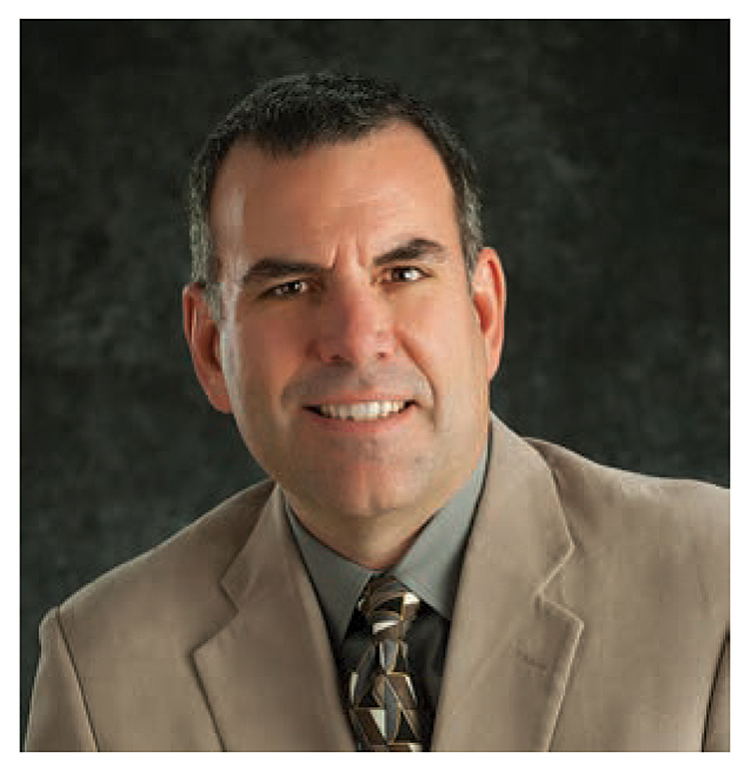
Code Provisions for Wisconsin – Raising Awareness
One of the primary sources of visibility for this Association and for me as Executive Director is the participation and experience we have in the codes arena. Recently, I have been actively engaged with numerous professionals from the state of Wisconsin. I’ve had phone calls and emails from homeowners, building inspectors, code officials, contractors, design professionals and even the engineering staff from the American Concrete Institute. You might wonder what all of these persons have in common: they are all being affected by that state’s adoption of ACI 332 as the minimum requirements for residential concrete.
Traditionally, states have formally adopted the International Residential Code (IRC) for prescriptive requirements for their dwelling code. “Jurisdictions wishing to adopt the 2015 International Residential Code as an enforceable regulation governing one- and two-family dwellings and townhouses should…” is offered to give the adoption language any jurisdiction might consider. By reference, the IRC encourages the use of ACI 332 as an optional or alternative provision code for the design and construction of residential concrete. However, Wisconsin has now become the first state maintaining an individual state dwelling code to incorporate a direct reference to ACI 332, rather than to the IRC.
The Uniform Dwelling Code (UDC) has been in place since 1980. Wisconsin’s Department of Safety and Professional Services states: “The UDC is enforced in all Wisconsin municipalities.” In 2018, legislation introduced an update to the UDC, whereby in SPS 321.02 (3) (d) it states:
Note: Concrete construction in standards established in one- and two-family dwellings shall meet the standards established in ACI 332. Construction means, materials, or methods not addressed in ACI 332 shall meet the standards established in ACI 318.
The state is responding to this big change, for now a “new” reference standard has been set as the mark for compliance. Interestingly, the CFA has been part of the development process of ACI 332 for more than three decades. Former Executive Director Ed Sauter, CFA members like Kirby Justesen (Solid Concrete Walls), Buck Bartley (Bartley Corp), Barry Herbert (Herbert Construction), Mary Wilson (Michel Concrete), Chris Tull (CRT Consulting) and Dennis Purinton (Purinton Builders) have been part of the voting membership for this code. I am the immediate past chair for the committee and led it through two code cycles. Dozens of articles and educational presentations have also been delivered by the CFA to help member companies and the industry at large anticipate, understand and implement strategies to embrace the advantages of this code.
These conversations have been fruitful to the industry and to the future development goals of the ACI 332 Code. If you have yet to crack the cover on this, I want to encourage you to do so now, before you are challenged in compliance as your state starts to consider similar adoption, or as designers select ACI 332 as the standard to be maintained in specifications.

Letter from the President
Greetings Everyone,
We are now officially into the Summer and I’m sure most of you are going all out pouring concrete. It is my hope that all of you are keeping your customers happy, working safely and profitable!
The last meeting of our Board took place in Quebec City. Amongst many other things, we finalized our Summer Convention agenda and education tracks. We continue to hear from some of you that it is not always convenient to leave your operations during this time of year. I understand, but the benefits of the education, socializing with our peers and supporting the CFA make the time a positive return for your efforts and the time away from our business.
Selecting Denver for this year, we have a location which is accommodating to travel, and this year we have added a special speaker. She will be discussing how to effectively deal with and manage increasingly difficult people in our businesses and others we encounter daily. This message is accompanied by several additional education sessions of value and the next certification opportunity.
I want to also encourage any CFA member to attend and feel welcome at our CFA Board meeting. Here you can learn more about what we are doing on your behalf and for all of our membership. Also please keep in mind we are always looking for individuals interested in a Board seat to represent the best interests of the CFA and our membership. The meeting will be held Thursday starting at 1pm.
There is also some new happenings, which concern many of us regarding the use of articulating cranes and the regulation for certified operators. OSHA continues to position that all crane operators receive certification, but there is also information developing about an NAHB effort to apply an exemption for operators delivering materials to this industry as well. While OSHA preaches safety at all costs, like all Government agencies they can tend to be hypocritical and look the other way when they get enough push back from special Lobbies.
One thing I can personally say on the subject is, if you have a crane(s), regardless of the rules, it is certainly worthwhile to have all your operators go through a certification class! Our company sent three individuals to CFA’s first national course in Tiffin, Ohio this past March. Each guy has been running a crane for some time and they all were thankful and happy with they came back for the experience, stating they were better, and most importantly, safer operators.
I hope to see all of you at our meeting in Denver! I’d love the chance to tell you more.
Best Regards,

Phillip Marone
CFA President
To a Dedicated Leader, with Gratitude

For over 40 years, the Concrete Foundations Association (CFA) has been the #1 resource for concrete foundation professionals across the country. Members of the association have turned to the CFA daily for questions about code issues, on-site technical problems, OSHA regulations, managerial challenges and much, much more. Through the past leadership of Ed Sauter, and current leadership of Jim Baty, members of the CFA have gained industry knowledge to become better companies, better leaders, better employees and even better people.
CFA Members often use Concrete Facts as a platform to announce company news, catch up on the latest industry developments, or announce new products and services to the industry. Today, members are using it as a way to give thanks to an organization leader who has pushed the boundaries of the industry, helped companies get through their biggest nightmares, and inspired leaders across the country both personally and professionally.
Since 2001, Mr. James Baty has served the residential concrete industry as a Technical Director, and currently serves as the Executive Director of the CFA.
“I first met Jim at a summer meeting (the first for both of us) many years ago,” said Dennis Purinton of Purinton Builders, Inc. “Since that time, I have called many times with questions on how to deal with code issues, inspector’s interpretations of codes or conflicting information in documents. His ability to research an issue and respond, in what seems like the speed of light, has been an invaluable asset, saving time, money, and more importantly, adding to our knowledge and expertise for future use,” said Purinton. “The knowledge gained under Jim and Ed’s leadership over the years has awarded us greater credibility with Code Officials and the Regulatory Community, both locally and nationally. We thank him for what he has so willingly done for all of us, and all that he will continue to do for others in the future.”
In addition to the knowledge and leadership Baty gives to the CFA, combined with his degree (BARCH) in Architecture from Iowa State University and career long emphasis in concrete systems education and thermal design efficiency, he also serves as the Manager for Regulatory and Technical Affairs for the Tilt-Up Concrete Association, is a Fellow of the American Concrete Institute (ACI), and serves on multiple ACI committees, including ACI C-655 – Residential Foundation Technician Certification, ACI 551 – Tilt-Up Concrete (secretary), ACI C-650-Tilt-Up Certification, ACI 306 – Cold Weather Concrete, and ACI CSAO – Codes and Standards Advocacy. He is also a present member and past chair of ACI 332 – Residential Concrete.
“It would be hard to overstate Jim’s importance to the CFA,” said Scott Smith of MPW Construction Services. “He has made himself into an expert on ACI, safety and OSHA regulations, cold weather concrete and much more,” said Smith. “Although his brain is very valuable to the CFA, what I really love about Jim is revealed in his faith, humility and dedication to family. We continue to be blessed with great leaders of our association!”
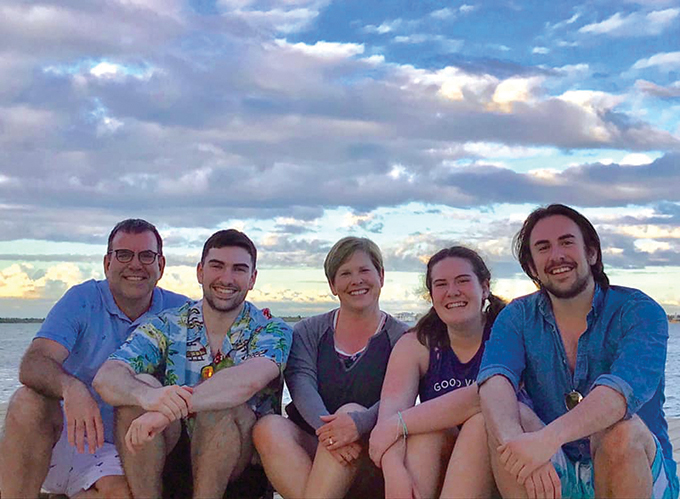
Baty’s leadership and dedication extends far beyond the concrete industry. He has been a member of the United Methodist Church of Mount Vernon (UMCMV) for 18 years, and has served the church in almost any capacity imaginable. He currently serves as Church Council Chair, Worship Leader and Care Minister, in addition to being an active member of the UMCMV’s music program and Life Group.
“Jim leads us by serving,” said Jim Bartley of Bartley Corp. “His actions better our industry, our association and our companies. He serves us all with optimism and enthusiasm, and sprang into action for our business following a series of MOSH [Maryland Occupational Safety and Health] citations,” said Bartley. “Within 24 hours of reading the list of 12 citations, he crafted a well-researched counter offer, responding to each citation with industry standards and evidence that we were not a bad actor. With his coaching and valuable research, I had the confidence and information I needed to pursue a favorable result. He stuck with me every step of the way, and helped us replace the heavy citations with ones more appropriate to the set of facts. Jim is a blessing to the CFA, and a super star for our industry.”
Baty is a regular educator featured at World of Concrete and the Tilt-Up Concrete Convention, and provides education for contractors and industry professionals on a broad range of industry topics. You can find Baty’s technical articles in Tilt-Up TODAY, Concrete Contractor and Concrete Construction magazines in their respective archives.
“Through Jim’s partnership with Ed Sauter, he has nourished the CFA to be one of the most influential organizations in the industry,” said Bruce Neale of Modern Foundations, Inc. “What is often hidden behind the scenes can have the most effect on our association. Jim continues to be active behind the scenes and in front of our members in a big way,” said Neale. “This association has always been a family oriented group of business and religious leaders, and he continues that leadership style well beyond the concrete industry.”
With Baty’s unparalleled passion to serve, he continues to support members of the association through his advocacy and industry knowledge.
“Jim took the accessibility of the CFA to a new level when he would respond to urgent requests for help from any member,” said Tim Parrish of CFI Enterprises, Inc. “I can remember numerous times calling the CFA office when an inspector was throwing up a red flag on a job site. He would quickly get us an answer or a resource we could use to “educate” the building official, solving the problem, getting us back to work, and increasing my standing locally as a concrete professional,” said Parrish. “Many times the money we saved from those phone calls would pay for our annual dues. Talk about a return on investment!”
It is no secret that Baty’s passion and enthusiasm inspires professionals across the country.
“His energy and desire to be productive is contagious,” said Kirby Justesen of Solid Concrete Walls. “I have learned a great deal from Jim both professionally and personally. His service on the ACI committees has helped advance CFA, ACI and the entire industry.”
Ed Sauter, past executive director of the CFA and longtime business partner of Baty’s, had taken the CFA to a high level during his years of leadership. Baty stepped up to the plate and has continued to lead the association with all that he has to give.
“Jim brought energy, eternal optimism and a ‘can-do’ attitude to the CFA,” said Sauter. “His people skills and family values made him a great fit, and the fact that I hired him twice should be an indication of the confidence I had in his abilities. Between our mutual love of wine, coffee, golf and the Cyclones, was a passion to serve the industry. It has truly been a pleasure to work with him over the years.”
The relationships that Baty has fostered over the years are a true testament of his character.
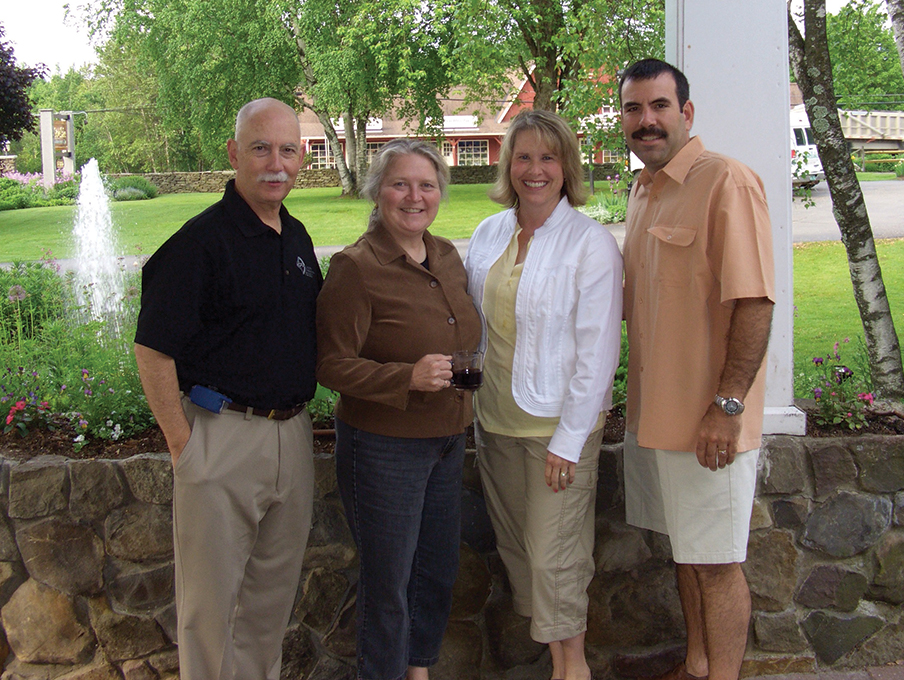
“Jim had some big shoes to fill after Ed’s leadership,” said Barry Herbert of Herbert Construction Co. “He has more than stepped up to the plate; he’s hit home run after home run,” said Herbert. “Jim is a motivation to all of us. He continues to help members through many different vehicles, and has been a personal inspiration to myself and the members of my family. He is what others should aspire to be like.”
On behalf of the association membership, thank you, Mr. James Baty, for all you have done and continue to do for this industry and beyond.
CONCRETE FOUNDATIONS CONVENTION

The CONCRETE FOUNDATIONS CONVENTION,
proudly presented by Schwing, is the largest annual gathering dedicated to the cast-in-place concrete industry. This event brings together concrete foundation professionals from across the country for 3 days of education, networking, awards, exhibits, certification and much more…
“Schwing is proud to sponsor this event,” said Timothy Goodroad, marketing and advertising coordinator for Schwing. “Foundation contractors are literally at the foundation of Schwing’s customer base. Many of the CFA members have grown and prospered along with Schwing over the last four and half decades as we partner in pumping,” said Goodroad. “Through the Concrete Foundations Convention and educated members of the CFA, we continue to keep the poured wall at the pinnacle of foundation integrity.”
Every year, concrete foundation professionals across the country take time away from their business to attend this event. Why should you attend? We’ve got plenty of reasons, but here are the top 5:
- Your competition is investing in education. Education at this event is designed specifically for contractors just like you. Don’t miss another opportunity to learn, evolve, and invest in your company’s success.
- Attendees have already overcome the challenges you’re facing today. One conversation could pay for the cost of registration over and over again. You’re not alone in this business.
- You need to re-examine your company’s toolbox. Exhibiting companies travel from across the United States to bring you the latest products and technology that the industry has to offer. Find new products that will save you time and money on your next job.
- You deserve to be nationally recognized for your best projects. Use the CFA’s Awards Program to leverage your marketing efforts and stand out among your competition.
- You need to take time away to re-energize. One goal of convention is to have you leave feeling refreshed and re-energized to return home and run your company the way it deserves to be ran.
Post event surveys show that nearly 80% of convention attendees made a new connection that will help them grow professionally, over 60% discovered a new product or tool that will save money on their next job, and close to 80% learned something that will improve the safety of their crews and projects.
Framed by the mountains in the heart of downtown Denver, attendees and their families will have access to the Mile High’s top restaurants and attractions. The CFA will add to this an education program designed specifically for foundation contractors, exceptional networking opportunities, and the latest equipment and technology advantages that the industry has to offer.
Register today at www.cfaconcretepros.org
ACCOMMODATIONS

HILTON DENVER CITY CENTER
The CFA has reserved a block of rooms at the Hilton Denver City Center with a special rate of just $209/night. You can reserve your room online by visiting the 2019 Concrete Foundations Convention website at
www.cfaconcretepros.org, or call (303) 297-1300. Make sure you tell them you are with the Concrete Foundations Association to receive the group rate.
Room blocks change daily. If you experience any issues reserving a room, please contact Lindsey at lbloomquist@cfaconcretepros.org for assistance.
ABOUT THE LOCATION
Hilton Denver City Center is ideally located for exploring downtown Denver and beyond. The city’s best restaurants and taverns and the 16th Street Mall are a quick walk from the front door. Sports fans will love the close proximity to Coors Field, the Pepsi Center, and Sports Authority Field at Mile High – all within 1-2 miles – and kids will enjoy the Downtown Aquarium and Elitch Gardens Amusement Park. There’s also a wealth of theaters, museums, city parks and other attractions nearby to discover.
GETTING THERE
The Denver International Airport (DEN) is just 25 miles from the Hilton Denver City Center. Rent a car, grab an Uber or visit www.flydenver.com for other transportation options from the airport.
EVENT HIGHLIGHTS
KICK-OFF BASH
Irving Equipment is the host of this year’s opening night! The event will kick-off with a happy hour among the industry’s top suppliers and manufacturers, directly followed by dinner, more networking and entertainment.
EDUCATION
This year’s education, sponsored by Fox Blocks, Verizon Connect and World of Concrete, is catered specifically to cast-in-place contractors, designed to foster unique discussions that challenge industry standards and resolve common discrepancies. From business management to technical issues in the field, you are sure to leave convention with means to make your company more profitable, more efficient and safer.
CERTIFICATION
Challenge your company to meet the standards set forth by this industry program certifying foundation contractor firms in the residential cast-in-place industry. Your certification registration gives you access to a six-part series program that will benefit your company and market. The goal of certification is to unify the industry with a common measurement of competency for concrete foundations and the companies that install them.
TECHNOLOGY
Get hands on with the newest products and technology that the industry has to offer! Post event surveys show that CFA convention attendees discovered new products or technology that will save them time and money and improve the look of their next project, found products that they never knew existed, and even learned something new about the products they already had.
AWARDS GALA
Proudly sponsored again by Putzmeister, the CFA Awards honor those individuals and organizations that demonstrate the highest ideals of professional knowledge and technical service. Presented will be the Projects of the Year and Professional Awards, in addition to several association awards. The evening will begin with drinks and networking in the exhibit hall, followed by dinner and the awards program.
Join the CFA Legacy Committee for an after party with drinks and dessert directly following the Awards Program!
KEYNOTE PRESENTATION
People Suck – How to Deal with Difficult People
Amy Woodall,
Executive VP, Sandler Training
How much of your time is spent putting out fires? Do you feel like difficult people or situations are passed around like a hot potato? Tired of being so reactive? Challenged with managing expectations? In a world chalked full of timelines, promises, and high expectations it isn’t enough to simply be good at your craft. Doing a job well-done is half the battle. Finger pointing, blame, and even weather can throw a wrench in even the most skilled craftsman’s plans. How it’s handled before, during and after makes all the difference in the success of the job and longevity of the relationship. Many folks will claim they love their job if it weren’t for people. Can you relate? Amy will give us practical tools to help us navigate these difficult situations while keeping our own sanity.
FEATURED PRESENTATIONS
Employee Health: Opioids, Alcohol, Mental Stress and Physical Injury
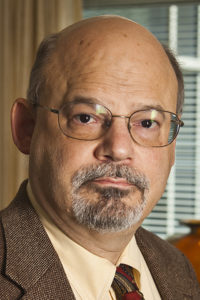
David Whitlock, Whitlock Law
Let’s have a frank discussion about what is possibly the most significant threat to your business: your employees’ health and well-being. This is a dangerous industry, with the leading number of on-the-job injuries, so physical injury is bound to happen. What happens next can lead to major problems. Why? The injured worker will have the physical injury to deal with, plus the mental stress of being out of work. Many will turn to alcohol and opioid use as – at first – pain relief, but later, daily use to “get through the day.” And this problem extends to the worker’s family members, also. There are some tools and guidance which we will explore. The bottom line is that we all need to be more involved.
Learning How to Maintain Effective Communication with OSHA
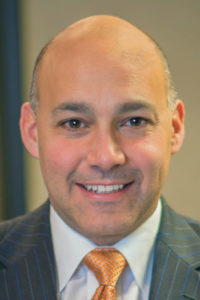
Michael Latiff, McDonald Hopkins
An experienced attorney in affecting OSHA appeals throughout the country, Michael brings his recent case studies with two CFA members as examples to ways contractors should take immediate precaution. Through the stories of MPW Construction Services and Bartley Corp, attendees will gain valuable insight to the preparation companies can make and the value they can perceive with support from the Association as well as a consultant that can best prepare for success before and after OSHA investigations.
Reinvigorating the Concrete Home Industry
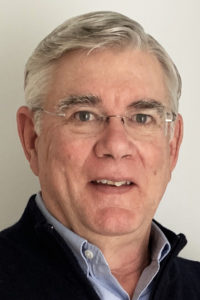
David Pfanmiller, Concrete Housing Insights
Concrete Housing Insights is a new consulting firm member of the CFA and is poised to lead contractors, builders and home owners into deepening relationships and commitments to deliver high-quality concrete home construction. Built from his project management days with Tri-City Contractors, Pfanmiller will discuss the processes of climbing into this market and participating in a way that can expand revenue and deliver success.
How to Negotiate the Best Contracts with your Customers
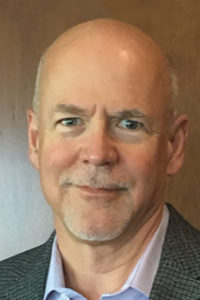
Douglas Staebler, Custom Concrete
Negotiating contracts is all about reducing risks and making clear agreements with customers dealing with all aspects of construction projects, especially who pays when something goes wrong? Many contractors simply sign contracts presented to them believing that they are written fairly for both parties, but in any event, not much can be done to make improvements. The reality is that most contacts provide little or no protection for the Subcontractor, while imposing many onerous and dangerous provisions, but there are actions you can take to negotiate better agreements.
This presentation will highlight the key differences between commercial and residential projects, and how to assess the risks to your business in both types of projects. Examples of the most common killer clauses will be presented, and how to improve them. The presentation will include a step by step plan to establishing processes and expectations in your business that will result in better agreements with your customers.
Performance-Based Concrete Mix Designs for
Structural Performance
Panel Discussion
This discussion will be moderated by Luke Pinkerton of Helix Steel. Helix Steel has completed the guidance for a new technical note offered by the CFA on performance-based modulus of rupture development. Based on their TSMR technology, this approach is being considered for reconstitution of ACI 322 as well as becoming the next derivation for ACI 332-22 as the industry looks more and more into ways of off-setting labor with technology and improving constructability. This design methodology is effective for both foundation wall construction as well as above-grade development. Included in this discussion will be Jason Ells, Sean Smith, Dan Bromley and Andy Stachler.
SOCIAL FUNCTIONS
![]() CFA TOPGOLF CHALLENGE
CFA TOPGOLF CHALLENGE
Wrap up this year’s convention with a fantastic evening out at TopGolf in Centennial, CO. Sponsored by Wall Ties & Forms and ICC Distribution Group, your registration includes transportation, 3-hours of unlimited TopGolf play, light appetizers and hosted beer and wine. Pre-registration is required.
![]()
DENVER BREW TOUR
Get the behind-the-scenes experience of Denver’s microbrewery scene. This tour will take you to 3 different breweries, complete with tours and tastings of the finest craft beer the city has to offer!
Pre-registration is required. Proudly sponsored by Stabila.
![]() ZIPLINE TOUR
ZIPLINE TOUR
Those looking for a more adventurous option on Friday afternoon can catch a bus and head up to the mountains for a guided zipline tour. This 4-line course is located in a protected nature park in the Rocky Mountains, and includes Colorado’s longest and fastest zipline. All participants should be in good physical condition and weigh less than 225 lbs. (strictly enforced by Denver Zipline Tours).
Pre-registration is required.

SCHEDULE
THURSDAY, JULY 25
12:00 PM – 3:00 PM ACI/CFA Certification Seminar
1:00 PM – 5:00 PM CFA Board of Directors Meeting
3:00 PM – 5:00 PM ACI/CFA Certification Exam
6:00 PM – 9:00 PM 2019 Kick-Off Bash
FRIDAY, JULY 26
8:30 AM – 9:00 AM Opening Remarks
9:00 AM – 9:30 AM OSHA Experience
9:30 AM – 10:00 AM Employee Health: Opioids, Alcohol, Mental Stress and Physical Injury
10:30 AM – 12:00 PM People Suck – Dealing with
Difficult People
(Session 1)
12:00 PM – 1:00 PM Working Lunch
1:00 PM – 2:30 PM People Suck – Dealing with
Difficult People
(Session 2)
2:30 PM – 6:30 PM Social Functions (Brew Tour or Zipline Tour)
6:30 PM – 7:30 PM Happy Hour with Exhibitors
7:30 PM – 9:00 PM Awards Program and Dinner
9:00 PM – 11:00 PM Legacy After Party
SATURDAY, JULY 27
7:00 AM – 8:00 AM Breakfast with an Attorney – The HR Q&A
8:00 AM – 9:00 AM Learning how to Maintain Effective Communication with OSHA
9:00 AM – 10:00 AM Contracts with Doug Stabler
10:00 AM – 11:00 AM Concrete Housing Insights – Reinvigorating the Concrete Home
11:00 AM – 12:00 PM Performance-Based Concrete Mix Designs for Structural Performance
12:00 PM – 4:30 PM Break
4:30 PM – 5:00 PM Transportation from Hilton to Centennial TopGolf
5:00 PM – 8:00 PM CFA TopGolf Challenge
8:00 PM – 8:30 PM Transportation from Centennial TopGolf to Hilton
“Looking back at starting a poured wall business in 1996, I’d say the best business decision I’ve made was joining the CFA, and attending this event year after year!”
– Mark Saldana, Saldana Concrete Inc.
“We have made a family vacation out of this event for the past 20 years! My husband has learned so much from other members in what to do, and what not to do in the poured wall industry. From looking into new equipment, to learning how to manage a workforce and deal with employees, our business would not be the same without this organization. It has become an extended family, and we look forward to seeing old friends, and making new friends every year at the Concrete Foundations Convention!”
– Roxi Saldana, Saldana Concrete Inc.
SPONSORS

Hospitality Sponsors
BADGER FORMS
CRANES & EQUIPMENT
GMX WATERPROOFING
NOX-CRETE PRODUCTS GROUP
PROGRESSIVE FOAM TECHNOLOGIES
WORKING ATHLETE

